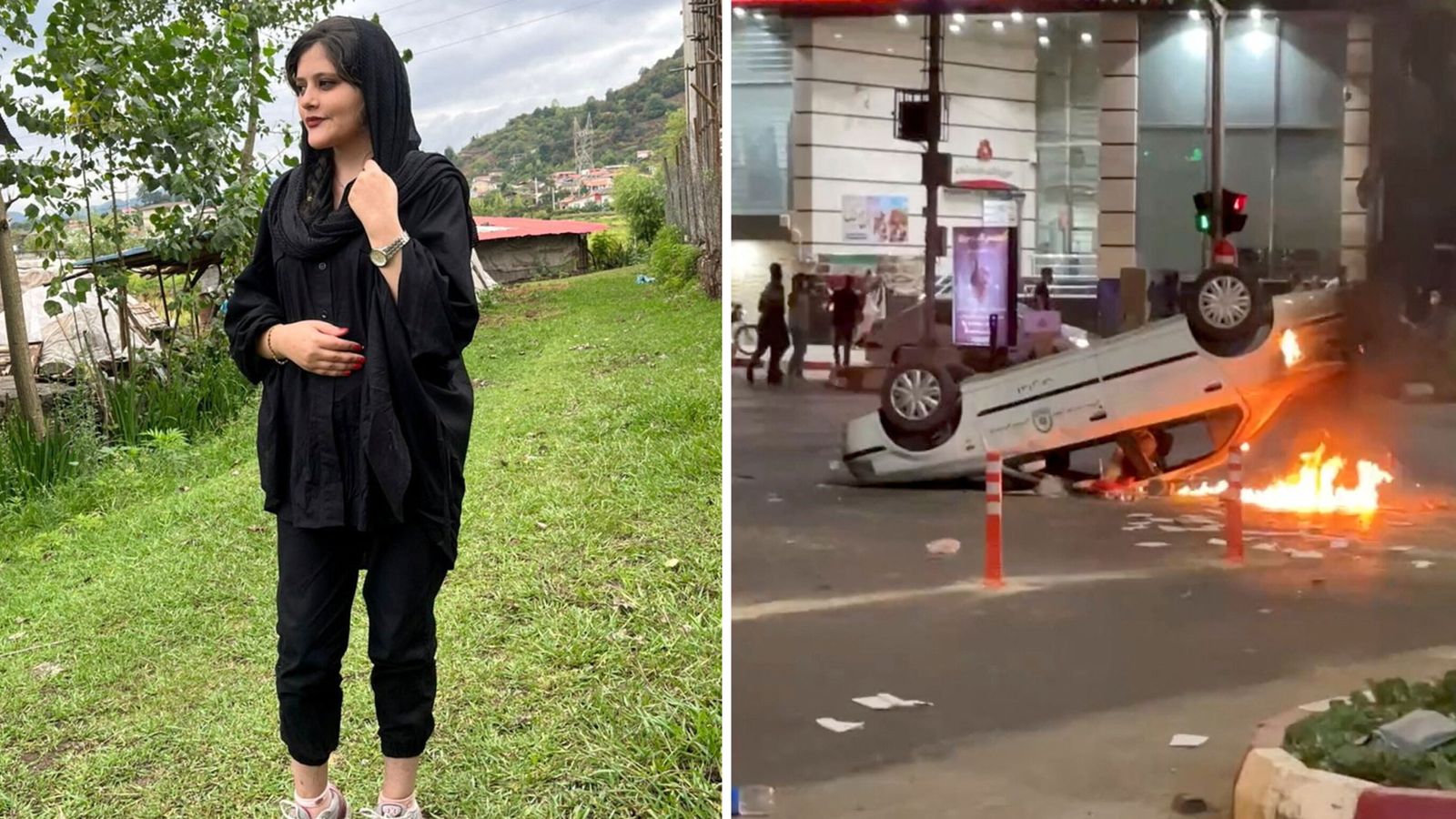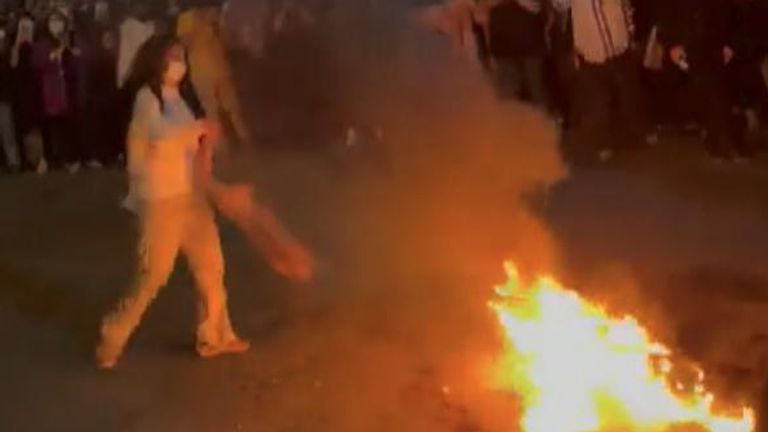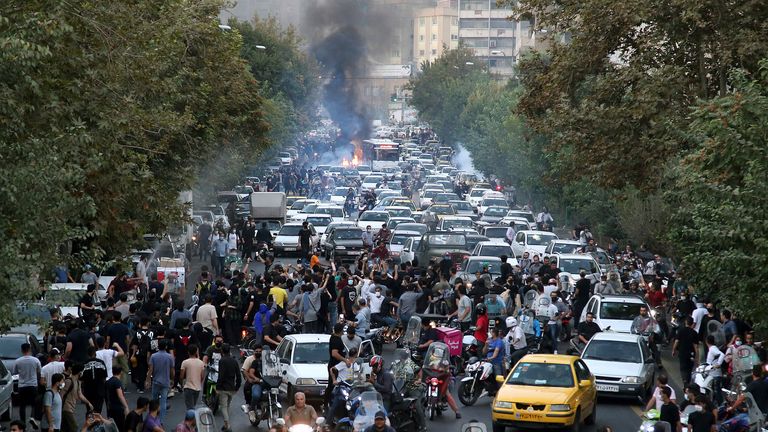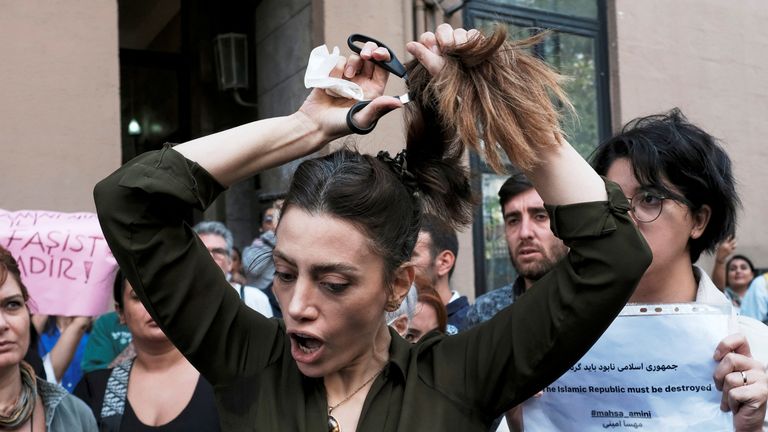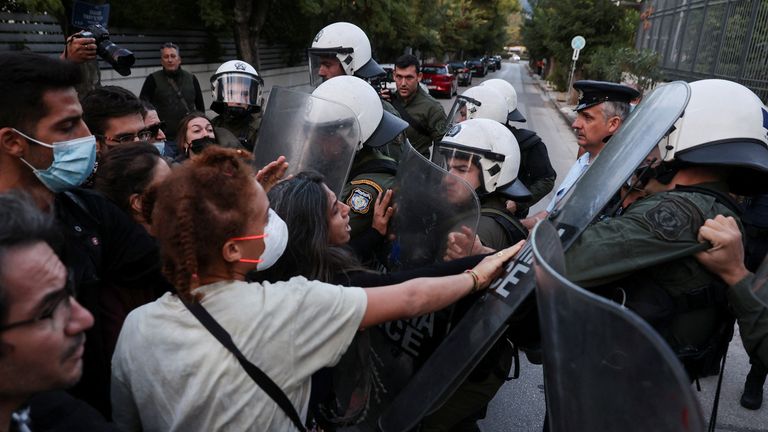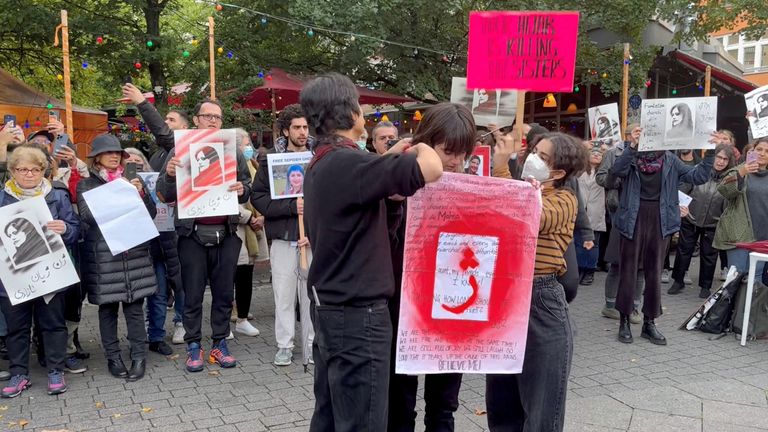The United States has imposed sanctions on Iran’s morality police and leaders of government agencies after the death of a woman in police custody sparked protests and worldwide condemnation.
At least nine protesters and two security force officers have been killed in violent demonstrations since the weekend following 22-year-old Mahsa Amini’s death.
The morality police detained Miss Amini last week, saying she didn’t properly cover her hair with a headscarf – known as the hijab – which is mandatory for Iranian women. Miss Amini collapsed at a police station and died three days later.
The US Treasury designated the leaders of the Iranian Ministry of Intelligence and Security, the Army’s Ground Forces, the Basij Resistance Forces, and other law enforcement agencies for the sanctions – which deny them access to their properties and bank accounts held in the US.
“These officials oversee organisations that routinely employ violence to suppress peaceful protesters and members of Iranian civil society, political dissidents, women’s rights activists, and members of the Iranian Baha’i community,” the Treasury said in a news release.
Police say Miss Amini died of a heart attack and deny she was mistreated, and the government released video footage purporting to show the moment she collapsed.
But her family says she had no history of heart trouble, and her death in police custody has triggered daring displays of defiance from protesters, in the face of beatings and possible arrest.
Independent experts affiliated with the UN said on Thursday that reports suggested she was severely beaten by the morality police, without offering evidence.
Niloufar Hamedi, a journalist who took photographs at the hospital after Ms Amini’s death, was arrested on Thursday, according to the reporter’s lawyer, Mohammadali Kamfirouzi.
He said her house was raided.
Women cut their hair in solidarity
Women have taken to the streets of Tehran and around the country and many Iranians, particularly the young, have come to see her death as part of the Islamic Republic’s heavy-handed policing of dissent and the morality police’s increasingly violent treatment of young women.
The protests have grown in the last five days into an open challenge to the government, with women removing and burning their state-mandated headscarves in the streets and Iranians calling for the downfall of the Islamic Republic itself.
“Death to the dictator,” has been a common cry in the protests.
They are the most serious demonstrations since 2019, when protests erupted over a government hike in the price of petrol.
One state TV anchor suggested the death toll from the mass protests could be as high as 17 – but did not clarify how he had reached that figure.
Miss Amini’s death also sparked condemnation from the United States, the European Union and the United Nations.
A wave of women worldwide have uploaded videos to social media platforms, cutting off their hair in solidarity with Iranian women and protests have been taking place in several countries.
Germany’s foreign minister Annalena Baerbock, who was in New York on Thursday for the UN General Assembly, condemned the crackdown and said Germany would raise the violation of women’s rights at the UN Human Rights Council.
“The brutal attack on the brave women in Iran is also an attack on humanity,” she said.
Iranian president demands US journalist wear headscarf
In New York, Iranian President Ebrahim Raisi took to the stage on Wednesday at the UN General Assembly.
CNN’s chief international anchor Christiane Amanpour said she had planned to confront Mr Raisi about the protests in what would be his first US-based interview, but the president pulled out when she refused to wear a headscarf.
“We are in New York, where there is no law or tradition regarding headscarves. I pointed out that no previous Iranian president has required this when I have interviewed them outside Iran,” the British-Iranian anchor wrote beside a photo of Mr Raisi’s empty chair.
“I couldn’t agree to this unprecedented and unexpected condition,”
“As protests continue in Iran and people are being killed, it would have been an important moment to speak with President Raisi.”
